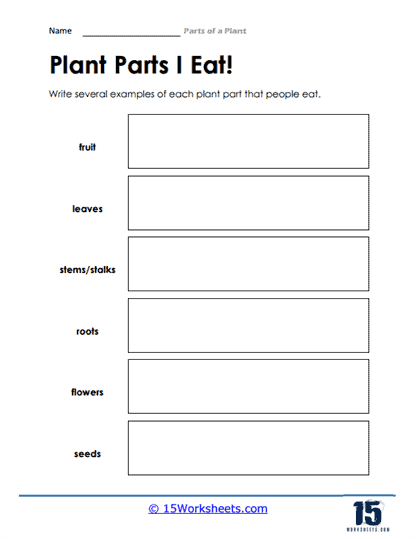Plant Parts I Eat

Worksheet Description
The worksheet looks into the fascinating connection between plant anatomy and human nutrition. It asks students to identify and jot down examples of different parts of plants that are commonly consumed by people. With designated spaces for fruits, leaves, stems/stalks, roots, flowers, and seeds, the sheet seeks to highlight the diverse range of plant-based foods that form part of our daily diet. It’s an interesting merger of botany and culinary science, aiming to make learners aware of the various plant components they ingest.
To proficiently complete this worksheet, students should contemplate the foods they regularly eat or are familiar with that come from plants. For each category, such as “fruit” or “roots,” they should recall specific examples and write them in the respective space. For instance, under “roots,” they might list carrots, radishes, and beets. This exercise of identification and listing should be done for all the categories until all sections of the worksheet are populated with examples.
This worksheet’s primary objective is to enlighten students about the varied plant parts that constitute a significant portion of human diets worldwide. By doing so, it deepens the appreciation for plants not only as environmental entities but also as vital sources of nutrition and sustenance. The activity also helps bridge the gap between theoretical botanical knowledge and practical everyday life, making the learning experience more tangible and relatable. Furthermore, it fosters an understanding of the vast diversity and utility of plants in human culinary practices.
